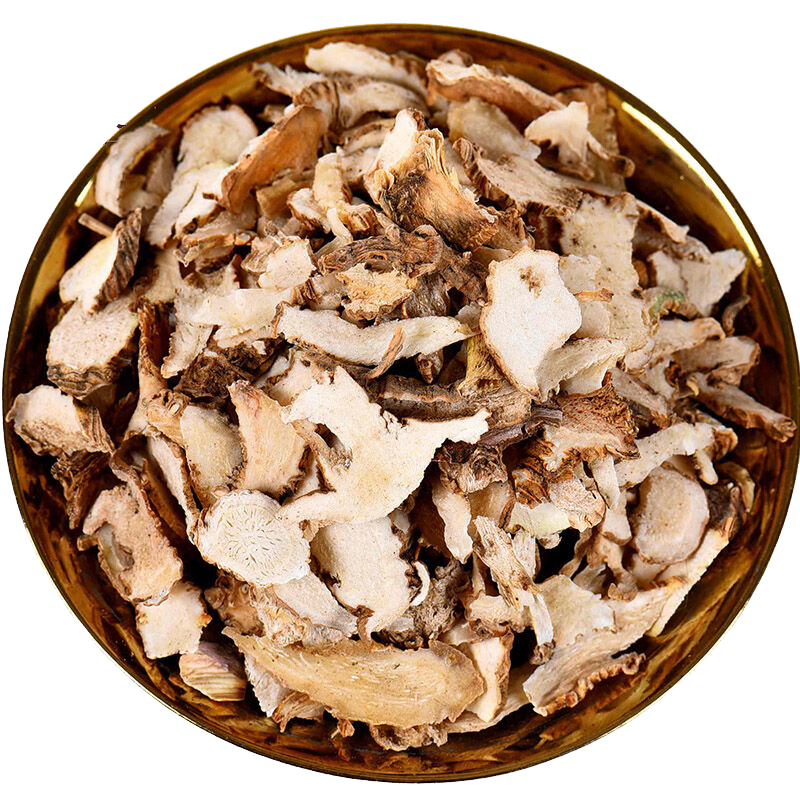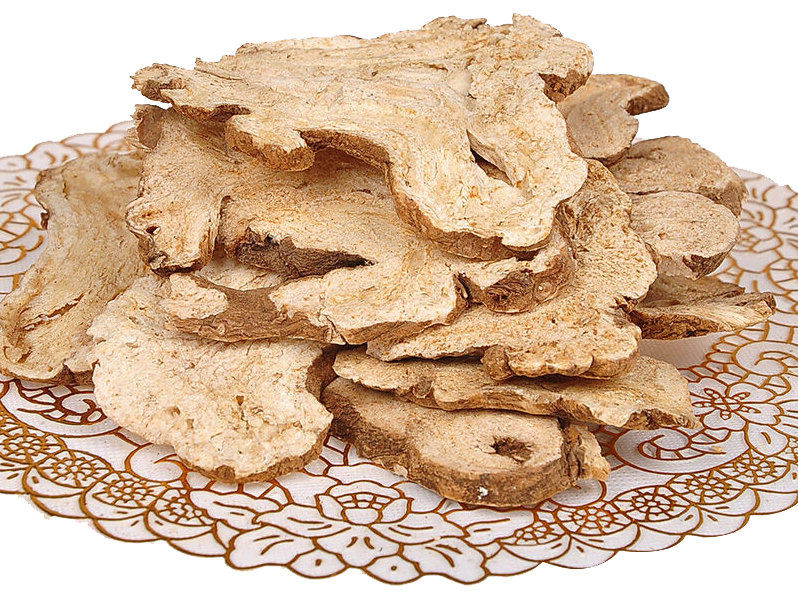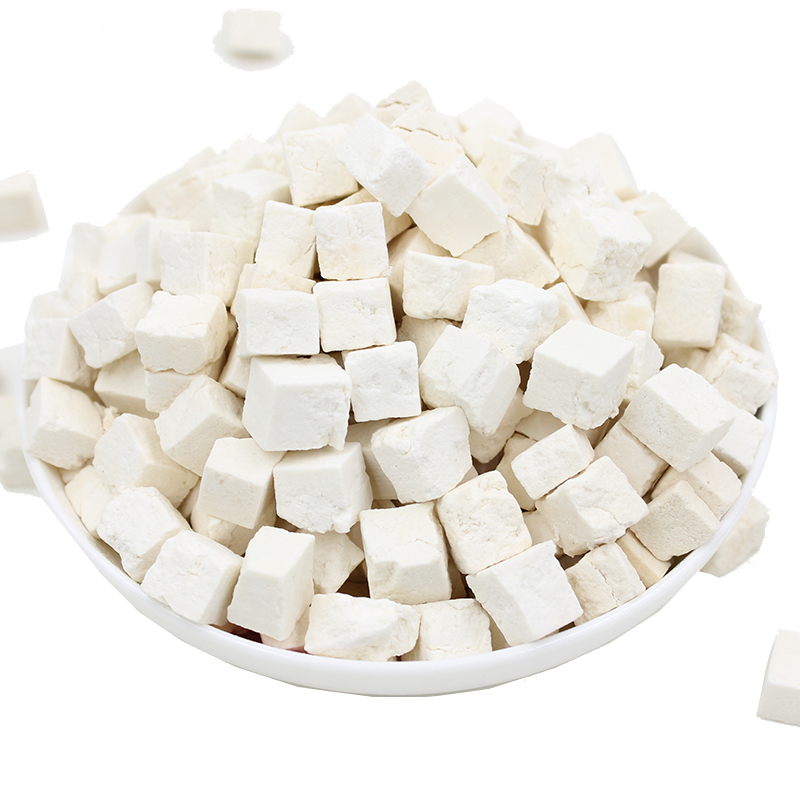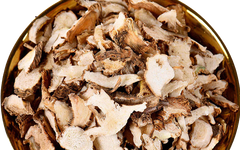


Fu Ling (Poria) can be cultivated using wood segments, tree roots, and pine needles. The main production area utilizes the mycelium of Fu Ling as a starter, which is inoculated onto pine wood. After a period of growth, the mycelium forms sclerotia.

Fu Ling grows parasitically on the roots of pine trees such as Chi Song (Pinus massoniana) or Ma Wei Song (Pinus taiwanensis). It can occasionally be found on the roots of other coniferous and broadleaf trees, preferring sandy soil. It thrives in warm, sunny, well-ventilated, and dry environments.
(1) It is advisable to select slopes at an altitude of 600-900 meters, with a gradient of 15-30 degrees, ensuring they are sheltered from the wind, sunny, with sandy, neutral to slightly acidic soil, and good drainage. Clear away grass roots, tree roots, stones, and other debris, then dig pits along the slope, with a depth of 60-80 cm, and the length and width depending on the number and size of the wood segments, generally about 90 cm long, with a spacing of 20-30 cm between pits. Drainage ditches should be established around the Fu Ling field.
(2) Prepare materials in the autumn and winter of the previous year by cutting down Ma Wei Song. After cutting, strip the branches and longitudinally peel 3-10 strips of bark from the pine wood according to its size, commonly referred to as “peeling to leave the fibers.” The width of the peeled area should be 3 cm, penetrating 0.5 cm into the wood to facilitate drying and resin flow. The prepared pine wood should be propped up to dry thoroughly. When the resin flow stops and the cut end produces a crisp sound when struck, it can be sawed into segments of 65-80 cm in length and stored in a well-ventilated and light-exposed area. By around June, the wood segments should be placed into the pits, with three segments per pit, arranged in layers according to thickness, in preparation for inoculation.


(1) The mycelium starter is artificially cultivated pure mycelium of Fu Ling, obtained through tissue separation methods. The method for producing Fu Ling spores is as follows:
① Place 8-9 kg of fresh sclerotia in a water container, about 2 cm above the water, at room temperature of 24-26°C, with humidity above 85%, and bright light. After just one day, white honeycomb-like fruiting bodies will appear near the water surface. After 20 days, the fruiting bodies can release a large number of spores. At this point, sterile operations can commence.
② Cut 1 cm² of dry fruiting body and suspend it on PDA culture medium using an S-shaped iron hook, incubating at 28°C. After 24 hours, the spores will germinate into white mycelium, which can then be purified and cultivated to obtain the mother strain.
③ The original strain is then inoculated onto the cultivation medium, which is incubated at 25-28°C for one month until the mycelium fills the entire medium, ready for use on the wood segments. The composition of the cultivation medium is: 76 parts pine sawdust, 22 parts wheat bran, 1 part gypsum powder, 1 part sugar, with enough water to maintain a moisture content of about 65%. Mix well and place in wide-mouth bottles and polypropylene plastic bags, sterilize conventionally, and then inoculate with the original strain.
(2) The meat starter refers to slices of fresh Fu Ling.
Select freshly harvested individuals of medium size, weighing between 250-1000 grams, with sufficient juice being preferable.
(3) The water starter refers to the wood segments inoculated with the meat starter, which contain mycelium.
In early May, select dry pine trees with a loose texture and a diameter of 9-10 cm, strip the bark to leave the fibers, and saw them into 50 cm long segments. For inoculation, use freshly harvested Fu Ling, generally 0.5-0.7 kg of fresh Fu Ling for every 10 kg of wood segments.
The head starter method is used for inoculation, where the Fu Ling slices are placed on the upper end of the wood segment near the bark, covered with 3 cm of soil, and can be excavated by early August. Select those that are yellow-white, with visible mycelium beneath the bark, and possess the aroma of Fu Ling for use as wood starter.

(1) For mycelium starter inoculation, select sunny days, sharpen the upper ends of the medium and fine wood segments, and then insert the cultivation medium bottle or bag into the pointed end. After inoculation, promptly cover with 3 cm of soil. Alternatively, the cultivation medium can be poured out from the bottle or bag and concentrated on the upper cut of the wood segment, covered with a layer of wood chips and leaves, and then covered with soil.
(2) For meat starter inoculation, layer the wood segments according to their thickness, using two on top and three on the bottom, or one on top and two on the bottom. During inoculation, use a clean knife to split the winter starter, placing the meat side tightly against the wood segment, with the skin facing out, and continue splitting as you inoculate. The amount of inoculation will depend on regional and climatic conditions, generally 250-1000 kg of Fu Ling for every 50 kg of wood segments.
(3) For wood starter inoculation, the selected wood segments are dug out and sawed into two sections, generally using 1-2 sections of water starter. During inoculation, simply align the wood starter with the ends of the wood segments. The inoculation season varies by region; in warmer areas, it can be done in early April, while in cooler areas, it can be done from early May to June. After inoculation, mycelium will begin to grow within 3-5 days, spreading out over 10 days. During this period, special attention should be paid to prevent termite damage. After 3-4 months of inoculation, Fu Ling can be harvested; do not disturb the wood segments during this time to avoid breaking the mycelium. During the fruiting period, Fu Ling grows rapidly, and cracks may appear on the surface, which should be promptly filled and weeds removed.


Black-winged Termite:
Damage symptoms: They bore into the pine wood segments, preventing the growth of Fu Ling and causing significant yield loss.
Prevention and control methods:
Avoid ant sources during winter cultivation; remove decayed tree roots; dig a closed circular trench 50 cm deep and 40 cm wide around the winter field, sprinkling lime powder or using the tree of heaven near the pit; introduce the termite enemy – Ant Fungus; set up bait pits around the Fu Ling field, burying pine wood or sugarcane residue to attract termites, checking once a month and killing any found.

When Fu Ling appears yellow-brown, it can be harvested; if it is yellow-white, it is not mature, and if it is black, it is overripe. Harvest on sunny days, brush off the mud and sand, and stack indoors in layers, adding a layer of straw on the bottom and top to promote sweating, turning every three days.

Once the moisture has dried and the skin of Fu Ling has wrinkled, the outer skin can be peeled off, resulting in Fu Ling Pi (Poria skin). The inner part is cut into uniform slices; pink indicates Chi Fu Ling (red Poria), white indicates Fu Ling Pian (Poria slices), and those with a wood core are Fu Shen (Poria spirit). Alternatively, it can be left uncut, and once the moisture has dried, it can be sun-dried to produce whole Fu Ling.


